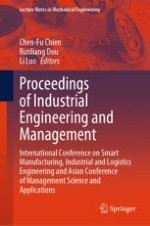This book is a compilation of selected papers from the 3rd International Conference on Smart Manufacturing, Industrial & Logistics Engineering (SMILE2023) and the 7th Asian Conference of Management Science and Applications (ACMSA2023). The book focuses on the recent theoretical and methodological developments, significant technical applications, case studies, and survey results in the areas of manufacturing informatics, manufacturing intelligence, big data analytics and data mining, modeling and decision analysis, Internet of Things, green supply chains, and intelligent logistics. The book makes valuable contributions to academic researchers and engineers in smart manufacturing, industrial engineering, and logistics, as well as readers will encounter new ideas to promote Digital Intelligence Transformation.
